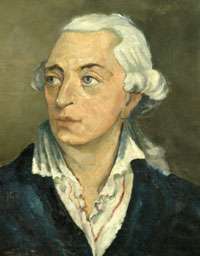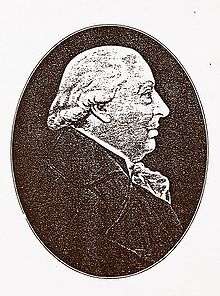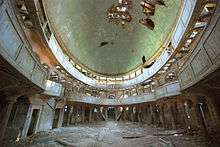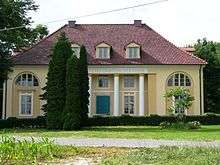Carl Gotthard Langhans


Carl Gotthard Langhans (15 December 1732 – 1 October 1808) was a Prussian builder and architect. His works are among the earliest buildings in the German classicism movement. His best-known work is the Brandenburg Gate in Berlin.
Life
Langhans was born in Landeshut, Silesia (now Kamienna Góra in Poland). He was not educated as an architect. He studied law from 1753 to 1757 in Halle, and then mathematics and languages, and engaged himself autodidactically with architecture, at which he concentrated primarily on the antique texts of the Roman architecture theorist Vitruvius (and the new version by the classics enthusiast Johann Joachim Winckelmann.
His first draft of "zum Schifflein Christi" for the Protestant Church in 1764 in Groß-Glogau earned him his first recognition as an architect, and in the same year, an appointment as building inspector for the Count of Hatzfeld, whose war-ravaged palace he had rebuilt to his own design between 1766 and 1774. Through the intervention of the Count of Hatzfeld, he also became known in the royal court in Berlin. As his first work in the service of the royal family, he built in 1766 the stairwell and the Muschelsaal in Castle Rheinsberg.
His designs were used in the construction of the The Princely Pheasantry in Pszczyna-Poręba in southern Poland.
He died at Grüneiche (Dąbie after 1945 and part of Śródmieście borough of Wrocław) near Breslau.
Family
In 1771, Langhans married Anna Elisabeth Jaeckel, the daughter of a jurist in Breslau. She had five children: daughters Louise Amalie and Juliane Wilhelmine, a son, theater architect Carl Ferdinand as well as two other children, who died soon after birth.
From 1782 he lived with his family in his in-laws' house at Albrechtstraße 18 in Breslau, and in 1788, he moved to Berlin, where he lived at Charlottenstraße 48, at the corner of Behrensstraße.
Study trips
Toward the end of the 18th century and the beginning of the 19th century, it was a great dream for every artist to undertake a trip to Italy in order to be able to study the antique buildings with one's own eyes. The fulfillment of this dream was not granted only to Goethe and Schinkel, but Langhans, too, was able to afford a trip in 1768 and 1769 thanks to the support of the Count of Hatzfeld. When he was later assigned to be the leader of the Breslau war and dominion chamber, he visited the countries of England, Holland, Belgium, and France on behalf of and at the expense of the king.
Images



| Wikimedia Commons has media related to Carl Gotthard Langhans. |